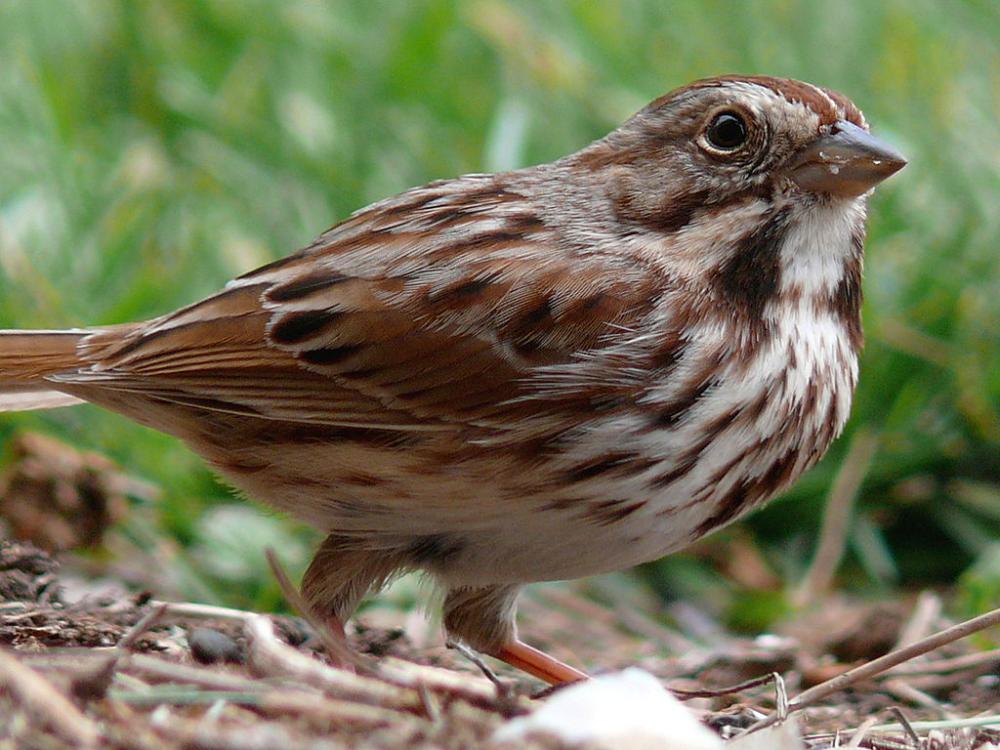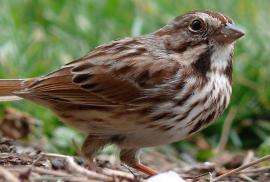Guide to Boreal Birds
Overview
The Song Sparrow is one of the most widespread, diverse, and geographically variable of North American birds. The 34 recognized subspecies range from very large, dark-colored, large-billed birds on the rocky beaches of the humid Aleutian Islands to small, sandy, short-billed birds in scrub desert areas in the lower Colorado River valley. Other subspecies are found in coastal salt marshes, freshwater marshes, humid coastal belts, and dry, sagebrush-covered regions.
Description
5-7" (13-18 cm). Heavy brown streaking on white underparts, with prominent central breast spot (sometimes lacking in juveniles). Subspecies show considerable variations in size and colors, ranging from pale sandy to dark brown. Pumps its relatively long, rounded tail in flight.
Voice
Song consists of 3 short notes followed by a varied trill, sometimes interpreted as Madge-Madge-Madge, put-on-your-tea-kettle-ettle-ettle.
Nesting
3-6 pale greenish-white, heavily marked eggs in a neat, well-hidden grassy cup nest often lined with hair, placed in a bush or on the ground. Lays up to 3 clutches in a season.
Habitat
Forest edges, clearings, thickets, and marshes with open grassy feeding areas; undergrowth in gardens, city parks; low dense scrub for nesting; tall vantage points for singing.
Range/Migration
Breeds from Aleutians and mainland Alaska east to Newfoundland and south to California, North Dakota, and Carolinas. Winters from southern Canada throughout United States to Gulf Coast and Mexico.



